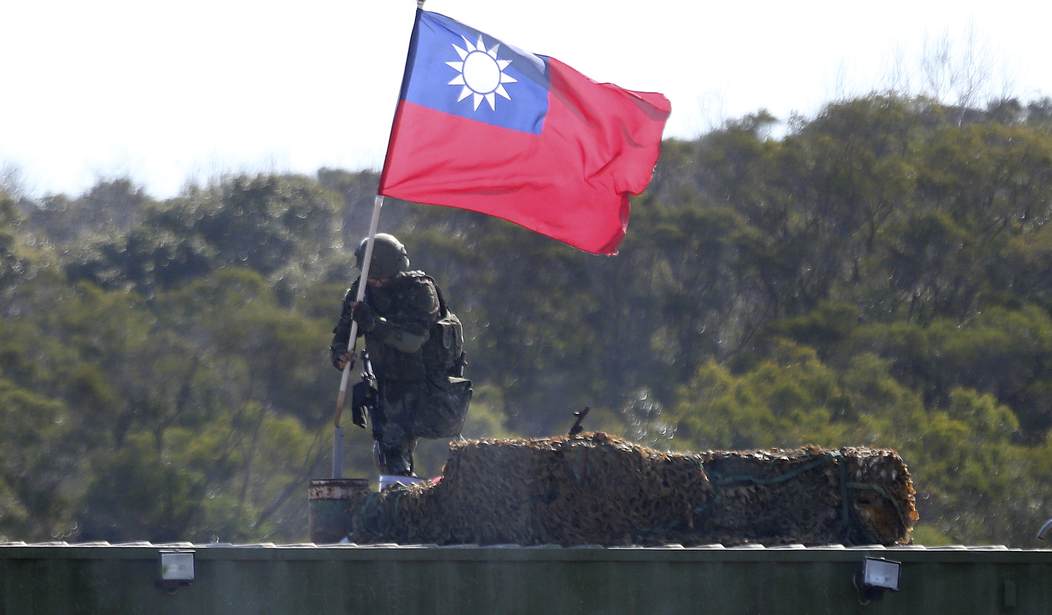Eighty-one years separate 1942 and 2023. In that human lifetime, the technologies of war have changed, as have some of the regional and global actors. Great Power rivalry definitely isn't ancient history in the Pacific and East Asia. However, communist China is now the expansionist power, not imperial Japan. The U.S. is still the challenged, but its allies now include democratic Japan, the independent Philippines, Singapore and Taiwan.
The Pacific's island geography hasn't changed -- the rocks and coral remain where they were in 1942. Despite the hype of the Space Age and the information age and now artificial intelligence, communist China's 21st century diplomats and generals know geographic position matters.
Why do small Pacific islands matter? Chinese military aircraft and navy warships need forward bases beyond the First Island Chain (Japan, Taiwan and the Philippines).
The new bases also provide the People's Liberation Army with missile launch sites. The closer missile launchers are to U.S. bases such as Pearl Harbor, San Diego and Puget Sound, the better, from Beijing's perspective. All the better for cowing the U.S. Navy.
Saipan, Palau, Truk Atoll. They were valuable islands in 1942. Many American citizens, victims of bad schools and leftist teachers, have never heard of these World War II battlegrounds. But controlling them or denying Japan use of these and other islands led to Japan's defeat. For the record, Japan used Saipan as a base for attacking Guam.
In 2023, the hearts and minds of people living in these islands matter. In these small nations, (and that's the current political configuration, nations and confederations) they are vulnerable to the suite of tricks that serves Beijing well in Europe and Washington. The wallets of agents of influence -- diplomatic slang for politicians and media operatives accepting bribes -- are a classic means of first obtaining a weather station, then fishing rights, then naval anchorage rights, then a navy base. After the navy base: a missile launch site.
Recommended
The process I describe isn't theory. In spring 2022, a leaked document indicated that China had reached an agreement with the Solomon Islands that would give it the right to make naval ship visits and send soldiers or police to train and (according to one source) "maintain order."
Maintain Order: that's Beijing-speak for taking control when the moment is ripe.
In March, Rep. Brad Sherman (D-CA) stated at a congressional hearing: "We have fought for these strategic islands before. Now we are ?ghting again, hopefully in a nonlethal battle, and we need to pay attention."
Here's an example of the current fight -- the nonlethal before the lethal. This spring, the biggest issue in the Federated States of Micronesia was the recognition of Taiwan over mainland China. The FSM is over 600 islands with less than 300 square miles of surface area. But their location, between Guam and Papua New Guinea, is valuable real estate.
The FSM's former president wanted to support Taiwan. But in early April, the FSM's legislature voted to retain recognition for China. Democracy in action? The former president repeatedly warned that Beijing was dragging the island federation "into its political warfare" and accused Beijing of corrupt practices to include bribing local politicians.
Beijing buys politicians in Washington, so why not Micronesia?
What can the U.S. do? In the summer of 1942, Japan invaded the island of New Guinea. Tokyo saw it as a step to taking France's New Caledonia -- an island with rich mineral deposits -- and possibly knocking Australia and New Zealand out of the war. The Japanese used Truk as a base for the invasion of New Guinea.
Australian and U.S. troops stopped the Japanese Army in the mountains and slowly pushed the imperial forces north.
On May 22, the U.S. and Papua New Guinea signed a new military agreement. Papua New Guinea is the eastern half of the island of New Guinea and is about 90 miles north of Australia.
Though late, it looks like Washington bets Papua New Guinea will be a bulwark against Chinese communist imperial expansion. History doesn't repeat itself, but if we're lucky, it will rhyme.

























Join the conversation as a VIP Member